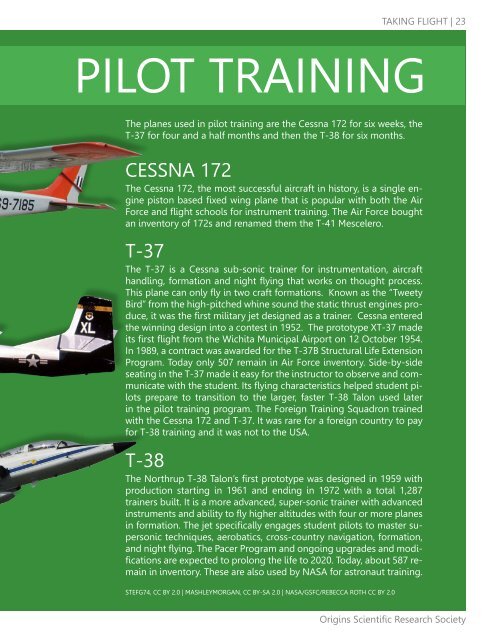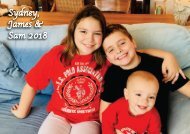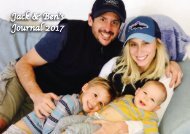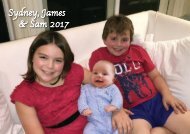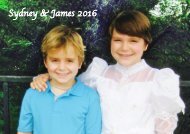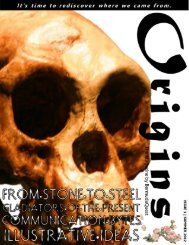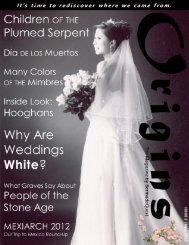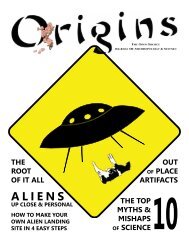Issue 10: Tech from the Military
Exploring how the military shaped the technology many of us depend on or simply desire to use on a daily basis.
Exploring how the military shaped the technology many of us depend on or simply desire to use on a daily basis.
Create successful ePaper yourself
Turn your PDF publications into a flip-book with our unique Google optimized e-Paper software.
TAKING FLIGHT | 23<br />
PILOT TRAINING<br />
The planes used in pilot training are <strong>the</strong> Cessna 172 for six weeks, <strong>the</strong><br />
T-37 for four and a half months and <strong>the</strong>n <strong>the</strong> T-38 for six months.<br />
CESSNA 172<br />
The Cessna 172, <strong>the</strong> most successful aircraft in history, is a single engine<br />
piston based fixed wing plane that is popular with both <strong>the</strong> Air<br />
Force and flight schools for instrument training. The Air Force bought<br />
an inventory of 172s and renamed <strong>the</strong>m <strong>the</strong> T-41 Mescelero.<br />
T-37<br />
The T-37 is a Cessna sub-sonic trainer for instrumentation, aircraft<br />
handling, formation and night flying that works on thought process.<br />
This plane can only fly in two craft formations. Known as <strong>the</strong> “Tweety<br />
Bird” <strong>from</strong> <strong>the</strong> high-pitched whine sound <strong>the</strong> static thrust engines produce,<br />
it was <strong>the</strong> first military jet designed as a trainer. Cessna entered<br />
<strong>the</strong> winning design into a contest in 1952. The prototype XT-37 made<br />
its first flight <strong>from</strong> <strong>the</strong> Wichita Municipal Airport on 12 October 1954.<br />
In 1989, a contract was awarded for <strong>the</strong> T-37B Structural Life Extension<br />
Program. Today only 507 remain in Air Force inventory. Side-by-side<br />
seating in <strong>the</strong> T-37 made it easy for <strong>the</strong> instructor to observe and communicate<br />
with <strong>the</strong> student. Its flying characteristics helped student pilots<br />
prepare to transition to <strong>the</strong> larger, faster T-38 Talon used later<br />
in <strong>the</strong> pilot training program. The Foreign Training Squadron trained<br />
with <strong>the</strong> Cessna 172 and T-37. It was rare for a foreign country to pay<br />
for T-38 training and it was not to <strong>the</strong> USA.<br />
T-38<br />
The Northrup T-38 Talon’s first prototype was designed in 1959 with<br />
production starting in 1961 and ending in 1972 with a total 1,287<br />
trainers built. It is a more advanced, super-sonic trainer with advanced<br />
instruments and ability to fly higher altitudes with four or more planes<br />
in formation. The jet specifically engages student pilots to master supersonic<br />
techniques, aerobatics, cross-country navigation, formation,<br />
and night flying. The Pacer Program and ongoing upgrades and modifications<br />
are expected to prolong <strong>the</strong> life to 2020. Today, about 587 remain<br />
in inventory. These are also used by NASA for astronaut training.<br />
STEFG74, CC BY 2.0 | MASHLEYMORGAN, CC BY-SA 2.0 | NASA/GSFC/REBECCA ROTH CC BY 2.0<br />
Origins Scientific Research Society


